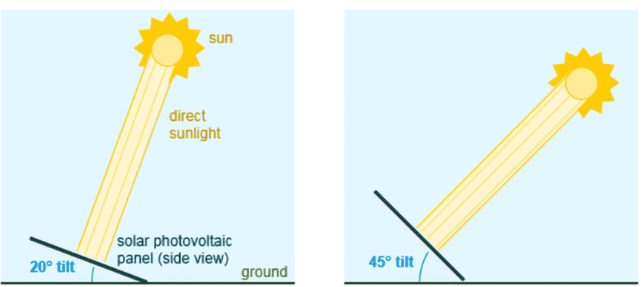Before we get to the question "How much does the optimal angle of solar panel installation affect the amount of power generated?" we need to understand the orientation of the solar panel installation. Otherwise, you are at the optimal angle but the direction is completely opposite, and this kind of power generation is not very useful. In the case of solar panels installed on the roof, the orientation of the house generally depends on how much sun you can get in a day, which in turn depends on how much sun the panels can get.
The correct way to determine true north and south is that true north and south face the Earth's axis, not align with the Earth's magnetic poles. For people north of the equator, the best direction for solar panels and solar cable h1z2z2-k is south, while homes in the southern hemisphere place their solar panels on roofs facing north. By positioning the solar panel based on true south and azimuth - the angle of the sun relative to true north and south - you get the best orientation for the solar panel.
 After determining the orientation of the solar panel, we adjust the optimal tilt angle. What is the optimal tilt angle? The best angle for a solar panel is one that gives the panel the most direct, vertical light. If your solar panels are perpendicular to the ground, they will tilt at a 90-degree angle. To collect solar energy more efficiently, solar panels should be angled as far as possible toward the sun. Photovoltaics produce energy when the sunlight hits the panel surface at a small angle (the "Angle of incidence"), or when the light hits the panel as close to vertical as possible.
After determining the orientation of the solar panel, we adjust the optimal tilt angle. What is the optimal tilt angle? The best angle for a solar panel is one that gives the panel the most direct, vertical light. If your solar panels are perpendicular to the ground, they will tilt at a 90-degree angle. To collect solar energy more efficiently, solar panels should be angled as far as possible toward the sun. Photovoltaics produce energy when the sunlight hits the panel surface at a small angle (the "Angle of incidence"), or when the light hits the panel as close to vertical as possible.
So how do you figure out the best angle to tilt a solar panel? Calculating the optimal inclination requires local latitude and longitude to determine the altitude and azimuth angles at each moment of the sun, and annual radiation data, preferably averaged over many years, to determine the characteristics of local solar radiation. Generally, PVsyst and other software can be used to calculate the optimal Angle conveniently and quickly. The optimal angle will be influenced by direction, dimension, altitude, and will have to be taken into account. In general, there will be a difference of about 20% between the optimal Angle and the non-optimal Angle.